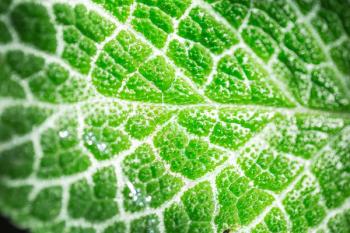
- June/July 2024
- Volume 39
- Issue 05
- Pages: 46–47
Arthur William Springsteen: A Beacon in the World of Spectroscopy
Arthur William Springsteen, a luminary in the field of spectroscopy, died on May 28, 2024. Here, we recap his life and career.
Arthur William Springsteen, a luminary in the field of spectroscopy, died on May 28, 2024. His contributions to spectroscopic standards were unparalleled, making him a revered figure in this complex and often enigmatic domain. Springsteen was known for his expertise in fluorescence; and multiple angle, diffuse, and specular reflection (or reflectance) and transmission (or transmittance), making him one of the major living authorities on spectroscopic standards. His passing has left a significant void in the scientific community, as he was not only a brilliant scientist but also a loyal, friendly, and ethical individual. His legacy continues to inspire young scientists, who now will have to stand on his technically broad shoulders.
Born on October 30, 1948, in Milford, Connecticut, Springsteen was the only son of Stanley and Catherine (Schatz) Springsteen. His early years were shaped by his father’s career in the Navy, leading to numerous relocations along the East Coast, including a two-year stint at Naval Station Guantanamo Bay in Cuba. Springsteen was active in sports from a young age, excelling in baseball and golf. He graduated from Milford Academy and earned a baseball scholarship to Saint Francis University, where he graduated with a degree in chemistry in 1970. During his college years, Springsteen played four years of varsity golf, achieving a winning record each year. In recognition of his achievements, he received the Distinguished Alumnus in Science Award from Saint Francis University in 2015.
He pursued further studies in chemistry, obtaining a Master of Science degree from Marshall University and a Ph.D. in Chemistry from West Virginia University. His postdoctoral research in organic chemistry at WVU included setting a course record at the university’s golf course, a record that remained unchallenged after the course was dismantled for new construction.
Upon moving to New Hampshire after graduation, he briefly served as an adjunct professor of chemistry, volunteer assistant basketball coach, and volunteer Sports Information Director at Colby-Sawyer College. He also worked as the golf pro at Kearsarge Valley Country Club when it was owned by the college.
At the time of his death, Springsteen had recently retired as the President and Chief Technical Officer of Avian Technologies, LLC, a company he founded in 1999. Before this, he spent 13 years at Labsphere, Inc. as Principal Scientist and Director of Advanced Development. During his tenure at Labsphere, he developed over thirty commercial products, including the renowned Spectralon diffuse reflectance material product line, various optical coatings, fluorescent materials, and accessories for measuring reflectance, diffuse transmittance, and fluorescence. He held nine U.S. patents and three European patents on materials and instrument design, winning the 1990 Photonics Spectra New Product of the Year award for Optical Grade Spectralon and sharing another in 1997 for the Labsphere bispectral fluorescence colorimeter.
Springsteen’s prolific scientific output included over 30 published papers and numerous contributions to Spectroscopy magazine's "Spectroscopy Workbench" section. He co-authored "Applied Spectroscopy: A Complete Guide for Practitioners" with Jerry Workman and edited the proceedings of the Third and Fourth Oxford Conferences on Spectrometry. He was deeply involved in the scientific community, serving as Secretary of the Council for Optical Radiation Measurement (CORM), a board member of the Inter Society Color Council (ISCC), and a member of the National Research Council (NRC) of the U.S. He actively participated in ASTM Committees E-12 (Color and Appearance) and Committee E-13 (Molecular Spectroscopy and Separation Science), the Society for Applied Spectroscopy (SAS), and the Council for Near-Infrared Spectroscopy (CNIRS). Recently, he worked with NASA, the Neils Bohr Institute, and Lucideon Ltd. to develop color standards for calibrating the cameras of the Mars 2020 Perseverance Rover.
Springsteen maintained his passion for golf and baseball throughout his life. He served on the Board of the John Cain Golf Course in Newport and became a minority owner of the Newport Golf Club. He won several club championships and was a member of the Society for American Baseball Research.
Springsteen's technical contributions (1–14) have had a lasting impact on optical measurements and standards, particularly in diffuse reflectance and color measurement. His work has provided foundational tools and methodologies essential to analytical chemistry and spectroscopy. His enduring legacy in the scientific community is marked by his profound expertise, innovative spirit, and unwavering commitment to excellence.
References and Further Reading
(1) Arthur W. Springsteen Obituary Home Page. https://www.chadwickfuneralservice.com/obituary/arthur-springsteen (accessed 2024-06-04).
(2) Springsteen, A.; Ricker, T. Standards for the Measurement of Diffuse Reflectance. Part I. NIR News 1996, 7 (4), 6–9. https://doi.org/10.1255/nirn.371
(3) Springsteen, A.; Ricker, T. Standards for the Measurement of Diffuse Reflectance: Part II. NIR News 1996, 7 (5), 12–13. https://doi.org/10.1255/nirn.382
(4) Springsteen, A.; Yurek, R.; Frazier, M.; Carr, K. F. In vitro measurement of sun protection factor of sunscreens by diffuse transmittance. Anal. Chim. Acta 1999, 380 (2-3), 155–164. https://doi.org/10.1016/S0003-2670(98)00577-7
(5) Springsteen, A. Introduction to measurement of color of fluorescent materials. Anal. Chim. Acta 1999, 380 (2-3), 183–192. https://doi.org/10.1016/S0003-2670(98)00578-9
(6) Springsteen, A. Standards for the measurement of diffuse reflectance–an overview of available materials and measurement laboratories. Anal. Chim. Acta 1999, 380 (2-3), 379–390. https://doi.org/10.1016/S0003-2670(98)00576-5
(7) Workman, J.; Graverson, D.; Pilecky, R. C.; Springsteen, A. The use of stable fluorescent artifacts for calibration of brightness levels in polyolefin films and plastic sheets using a precise set of fluorescent calibration standards. Spectrosc. Lett. 2002, 35 (2), 245–256. https://doi.org/10.1081/SL-120003810
(8) Frost, T.; Springsteen, A. Optical spectrometry: Applications and Instrumentation into the 21st Century. Anal. Chim. Acta 1999, 380 (2-3), 113. https://www.sciencedirect.com/journal/analytica-chimica-acta/vol/380/issue/2
(9) Workman Jr., J.; Springsteen, A. Eds. Applied Spectroscopy: A Compact Reference for Practitioners. Academic Press, 1998, pp. 193, 247. https://doi.org/10.1016/B978-0-12-764070-9.X5000-8
(10) Springsteen, A. W.; Ricker, T. M.; Leland, J. E. Guide to Reflectance Materials and Coatings, Labsphere Technical Guide, North Sutton, NH 1993.
(11) Springsteen, A. W. Standards for Reflectance Measurements, Selection and Use: A Primer (Part 1). Spectroscopy 2000, 15 (5), 21–27.
(12) Springsteen, A. W. Standards for Reflectance Measurements, Selection and Use: A Primer (Part 2) Spectroscopy 2000, 15 (6) 22–25.
(13) Springsteen, A. W. Standards for the Measurement of Diffuse Reflectance- an Overview of Available Materials and Measurement Laboratories. Anal. Chim. Acta 1999, 380, 379–390. https://doi.org/10.1016/S0003-2670(98)00576-5 (accessed 2024-06-04).
(14) US Patents Home Page Search for Inventor: Springsteen, Arthur. https://ppubs.uspto.gov/pubwebapp/static/pages/ppubsbasic.html (accessed 2024-06-04). Issued US Patents and US Patent Application Numbers: US-7477375-B2, US-20070289355-A, US-7057164-B21, US-20040262510-A1, US-6278521-B1, US-5763519-A, US-5488473-A, US-5462705-A, US-4912720-A.
Articles in this issue
over 1 year ago
Evaluating a Multilayer Polymer Film by Raman Microscopyover 1 year ago
Ellis Ridgeway Lippincott: A Legacy of Scientific Innovationover 1 year ago
Vol 39 No 5 Spectroscopy June/July 2024 Europe PDFNewsletter
Get essential updates on the latest spectroscopy technologies, regulatory standards, and best practices—subscribe today to Spectroscopy.





